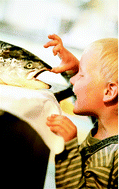10th Anniversary Review: when healthy food becomes polluted—implications for public health and dietary advice
Abstract
Divergent scientific and regulatory agency perspectives about contaminants in fish have lead to contradictory advice and confusing public messages about its consumption. The evidence for the protective effect of eating fish on cardiovascular outcomes is considered to be convincing. It has long been attributed to n-3 unsaturated


 Please wait while we load your content...
Please wait while we load your content...